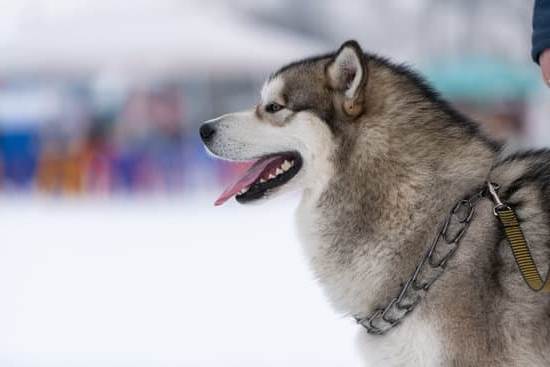Training a dog to walk up a ramp can be a beneficial skill for both you and your furry friend. Whether it’s for helping older dogs with mobility issues or simply teaching your pup a new trick, ramp training can enhance your dog’s agility and confidence. By following the right techniques and being patient with the process, you can successfully teach your dog to navigate ramps with ease.
When it comes to training your dog to walk up a ramp, consistency and positive reinforcement are key. With the right approach, you can help your dog overcome any initial hesitation and fear of using a ramp. In this article, we will explore the step-by-step process of ramp training, from choosing the right ramp for your dog to troubleshooting common issues that may arise during training.
By investing time and effort into teaching your dog how to use a ramp, you are not only providing them with a valuable skill but also strengthening the bond between you two. So, let’s dive into the world of ramp training and discover how you can support your canine companion in mastering this useful ability.
Benefits of Teaching Your Dog to Use a Ramp
Teaching your dog to use a ramp can have numerous benefits for both you and your furry companion. One of the main advantages is the prevention of potential joint injuries or strain that may occur when dogs repeatedly jump on and off high surfaces, such as cars or beds. By training your dog to walk up a ramp, you are providing them with a safer alternative that can help preserve their joint health in the long run.
Improving Accessibility
Additionally, teaching your dog to use a ramp can improve accessibility for older dogs or those with limited mobility. Ramps can make it easier for dogs with arthritis or other physical limitations to access higher surfaces without putting unnecessary stress on their bodies. With the right training and practice, even senior dogs can learn how to confidently navigate ramps and maintain their independence.
Building Confidence
Training your dog to walk up a ramp not only offers physical benefits but also helps build confidence in your canine companion. As they master the skill of using a ramp, they will become more self-assured and comfortable in new situations. This increased confidence can translate into other aspects of their life, contributing to overall mental well-being and happiness. Through consistent training methods and positive reinforcement, you can empower your dog to face challenges with courage and grace.
Choosing the Right Ramp for Your Dog
When it comes to training your dog to walk up a ramp, one of the first steps is selecting the right ramp for your furry friend. There are various types of ramps available in the market, each catering to different needs and preferences. Before making a purchase, consider factors such as your dog’s size, age, mobility issues, and where you plan to use the ramp.
Types of Ramps
There are different types of ramps available, such as folding ramps, telescoping ramps, and even inflatable ramps. Folding ramps are convenient for easy storage and portability while telescoping ramps offer adjustability in length. Inflatable ramps are great for smaller dogs or temporary use. Consider which type would best suit your dog’s needs and your lifestyle before making a decision.
Size and Weight Capacity
It is crucial to choose a ramp that is suitable for your dog’s size and weight. Most ramps come with weight capacity recommendations, so be sure to select one that can safely support your dog’s weight. Additionally, consider the width of the ramp to ensure that it provides enough space for your dog to comfortably walk up without feeling confined.
Material and Durability
The material of the ramp plays a significant role in its durability and safety. Look for ramps made from high-quality materials such as aluminum or durable plastic, as they offer better stability and longevity. Check for features like anti-slip surface or side rails for added security during training sessions on how to train a dog to walk up a ramp. Prioritize safety when choosing a ramp for your furry companion’s training journey.
Preparing Your Dog for Ramp Training
Before starting the actual training on how to train a dog to walk up a ramp, it is essential to ensure that your furry friend is comfortable with the idea of using a ramp. This can be achieved by introducing your dog to the ramp in a gradual and positive manner.
Start by placing the ramp on the ground near your dog’s favorite spot or play area so they can get familiar with it. Allow them to sniff and inspect the ramp at their own pace, rewarding them with treats and praise for showing interest.
Once your dog seems at ease around the ramp, you can begin incorporating simple exercises to build their confidence and prepare them for actual walking. Encourage your dog to walk alongside the ramp or place treats at different intervals on the ramp so that they learn to associate going up with something positive. It is important to keep these initial sessions short and fun, ensuring that your dog associates the ramp with a sense of enjoyment.
Additionally, make sure that your dog is physically ready for ramp training. Ensure that they are in good health and have no underlying medical conditions that may affect their ability to use a ramp comfortably. Consult with your veterinarian if you have any concerns about your dog’s physical condition before starting training. By taking these preparatory steps, you set a strong foundation for successful ramp training with your beloved canine companion.
| Key Point | Details |
|---|---|
| Introducing Ramp Gradually | Start by placing the ramp near your dog’s favorite spot for familiarity. |
| Positive Reinforcement | Reward your dog with treats and praise during introduction to create positive associations. |
| Physical Readiness | Ensure your dog is healthy and consult with a vet if needed before training. |
Step-by-Step Guide on Teaching Your Dog to Walk Up a Ramp
Training your dog to walk up a ramp can be a beneficial skill for both you and your furry friend. Whether you have a senior dog who needs assistance getting into the car or a small pup who struggles with stairs, teaching them to use a ramp can make life easier for everyone involved. With patience, consistency, and positive reinforcement, you can successfully train your dog to navigate ramps with ease.
To start the training process, you will need to gather some essential supplies. These include treats to reward your dog for their progress, a sturdy ramp that suits your dog’s size and needs, and a leash to guide them along the ramp safely. Make sure the ramp is secure and stable before starting the training session to prevent any accidents or fear from occurring.
Next, introduce your dog to the ramp in a calm and positive manner. Allow them to sniff and explore the ramp at their own pace before encouraging them to take their first steps on it. Use treats and praise to motivate them as they begin walking up the ramp. Here is a step-by-step guide on how to train a dog to walk up a ramp:
- Start by placing the ramp on flat ground without any incline.
- Encourage your dog with treats or toys to walk onto the ramp.
- Gradually increase the incline of the ramp as your dog becomes more comfortable.
- Use verbal cues such as “up” or “ramp” while guiding them up the slope.
- Repeat this process multiple times until your dog feels confident walking up inclines.
- Practice regularly and be patient with your furry companion as they learn this new skill.
By following these steps and utilizing positive reinforcement techniques, you can effectively train your dog to walk up a ramp. Remember that every dog learns at their own pace, so be patient and consistent in your training efforts. With time and practice, your canine companion will master this skill and make using ramps a breeze for both of you.
Troubleshooting Common Issues During Ramp Training
When training your dog to walk up a ramp, it is common to encounter certain issues that may hinder their progress. One common issue is fear or reluctance towards the ramp itself. Dogs may be hesitant to climb a ramp if they are not accustomed to its surface or incline.
To address this, start by introducing the ramp gradually, allowing your dog to explore and sniff it at their own pace. You can also use treats or their favorite toy to create a positive association with the ramp.
Another issue during ramp training is difficulty in navigating the incline or maintaining balance. Some dogs may struggle with the concept of walking on an uneven surface, especially if they have joint problems or mobility issues. To help your dog overcome this challenge, consider using a non-slip surface on the ramp to provide more traction. Additionally, you can support them by using a harness or leash to guide them up the ramp until they feel more comfortable.
In some cases, dogs may exhibit frustration or impatience during ramp training sessions. They may become easily distracted or lose interest in completing the task. To combat this issue, keep training sessions short and engaging, focusing on positive reinforcement and rewards for each successful attempt.
Patience and consistency are key when troubleshooting common issues during ramp training, as every dog learns at their own pace. With practice and encouragement, your furry companion will eventually master the skill of walking up a ramp with confidence and ease.
| Common Issues During Ramp Training | Solutions |
|---|---|
| Fear or reluctance towards the ramp | Gradual introduction and positive reinforcement |
| Difficulty in navigating incline | Use non-slip surface; provide support with harness or leash |
| Frustration or impatience during training | Keep sessions short and engaging; focus on positive reinforcement |
Reinforcing Ramp Training With Positive Reinforcement
When it comes to training your dog to walk up a ramp, positive reinforcement is key. This method involves rewarding your dog for performing the desired behavior, in this case, successfully walking up the ramp. By using positive reinforcement techniques, you can effectively encourage and motivate your furry friend to master this skill.
Here are some ways you can reinforce ramp training with positive reinforcement:
- Offering treats: Use your dog’s favorite treats as a reward for walking up the ramp. Each time they successfully navigate the incline, provide them with a treat to reinforce the behavior.
- Praise and encouragement: Dogs thrive on praise and attention from their owners. Offer verbal praise, petting, and enthusiastic encouragement when they make progress on the ramp.
- Clicker training: Clicker training involves using a clicker device to mark desired behaviors, followed by a reward. You can use a clicker to signal to your dog when they have done well in walking up the ramp.
Positive reinforcement creates a positive association with walking up the ramp for your dog, making them more likely to continue practicing this skill. Remember to be consistent in your rewards and praise, and always keep training sessions fun and engaging for your canine companion.
In addition to using positive reinforcement during ramp training, it is important to be patient and understanding with your dog. Every pup learns at their own pace, so it’s essential to tailor your training approach to suit their individual needs and abilities. With dedication and consistency, you’ll soon have a confident dog who can effortlessly walk up any ramp with ease.
Gradually Increasing Difficulty Levels in Ramp Training
When it comes to training a dog to walk up a ramp, gradually increasing the difficulty levels is essential for ensuring success in their learning process. Once your pup has mastered walking up and down a flat ramp, it’s time to challenge them further by adjusting the incline of the ramp. This gradual increase will help strengthen their muscles and improve their balance over time.
Start by raising one end of the ramp slightly, making sure it is secure and stable before allowing your dog to attempt walking up it. Use treats and positive reinforcement to encourage them to try out the new challenge. Keep a close eye on your dog as they navigate the steeper incline, offering support and guidance as needed. With consistency and patience, your furry friend will eventually feel comfortable walking up ramps with varying degrees of incline.
Another way to increase difficulty levels in ramp training is by introducing obstacles or distractions along the ramp. Placing toys or treats at different intervals can motivate your dog to focus on their task and navigate through these challenges. This not only keeps training sessions interesting but also helps improve your dog’s concentration and problem-solving skills. Remember to always reward your dog for successfully overcoming each obstacle, reinforcing their confidence and progress in ramp training.
Advanced Tips and Tricks for Perfecting Your Dog’s Ramp Skills
Now that your dog has mastered the basic skills of walking up a ramp, it’s time to take their training to the next level with some advanced tips and tricks. These techniques will help enhance your dog’s confidence and agility when using a ramp, making them more comfortable in various situations.
One important tip is to vary the incline of the ramp gradually. Start with a low incline and slowly increase it over time as your dog becomes more comfortable. This will challenge your dog’s muscles and coordination, improving their overall strength and balance. Additionally, practicing on ramps with different surfaces such as carpet, rubber, or metal can help your dog adapt to various textures and improve their grip.
Another useful tip is to introduce distractions while training your dog on the ramp. This could include tossing a toy at the end of the ramp or having someone walk across it while your dog is using it. By teaching your dog to focus on their task despite distractions, you are helping them become more attentive and focused during ramp training.
Finally, consider incorporating other obedience commands into your ramp training sessions. For example, you can practice “sit” or “stay” commands before allowing your dog to walk up the ramp. This will reinforce their obedience and self-control, making them more responsive to your cues during ramp training.
Remember to be patient and consistent with these advanced techniques, as each dog learns at their own pace. With dedication and practice, your furry friend will soon become a pro at walking up ramps with ease.
Conclusion
In conclusion, training your dog to walk up a ramp can be a rewarding experience for both you and your furry friend. By following the step-by-step guide provided and being patient with your dog, you can successfully teach them this useful skill. The benefits of teaching your dog to use a ramp are numerous, from aiding in their mobility as they age to preventing injuries from jumping on and off furniture or vehicles.
Remember to choose the right ramp for your dog’s size and needs, as well as preparing them adequately for training by creating a positive environment. Troubleshooting common issues during ramp training is essential to ensure that your dog remains comfortable and confident throughout the process. Utilizing positive reinforcement techniques and gradually increasing difficulty levels will help solidify their ramp skills.
As you celebrate your dog’s success in mastering the ramp, don’t forget to continue reinforcing their training with praise and rewards. Consider incorporating advanced tips and tricks to keep challenging your dog while improving their abilities further. With dedication, consistency, and patience, you can help your loyal companion become proficient in walking up ramps and navigating various surfaces with ease. Celebrate this achievement together and enjoy the newfound freedom it brings to both you and your canine companion.
Frequently Asked Questions
How Do I Get My Dog to Climb a Ramp?
When training your dog to climb a ramp, it’s essential to make the experience positive and rewarding. Start by placing treats at the top of the ramp to entice your dog to climb up. Use verbal cues and gentle encouragement to guide them along the way.
Is a Ramp or Steps Easier for a Dog?
Whether a ramp or steps are easier for a dog depends on the individual animal’s preferences and physical abilities. Ramps provide a gentler incline, which can be beneficial for dogs with joint issues or mobility challenges. Steps, on the other hand, offer a more natural stair-like movement that some dogs may find easier to navigate.
What Is the Correct Angle for a Dog Ramp?
The correct angle for a dog ramp is typically between 18 to 25 degrees. This angle allows for a comfortable ascent without putting too much strain on your dog’s joints or muscles. It’s important to consider your dog’s size, age, and physical condition when determining the best angle for their ramp.

Welcome to the blog! I am a professional dog trainer and have been working with dogs for many years. In this blog, I will be discussing various topics related to dog training, including tips, tricks, and advice. I hope you find this information helpful and informative. Thanks for reading!





